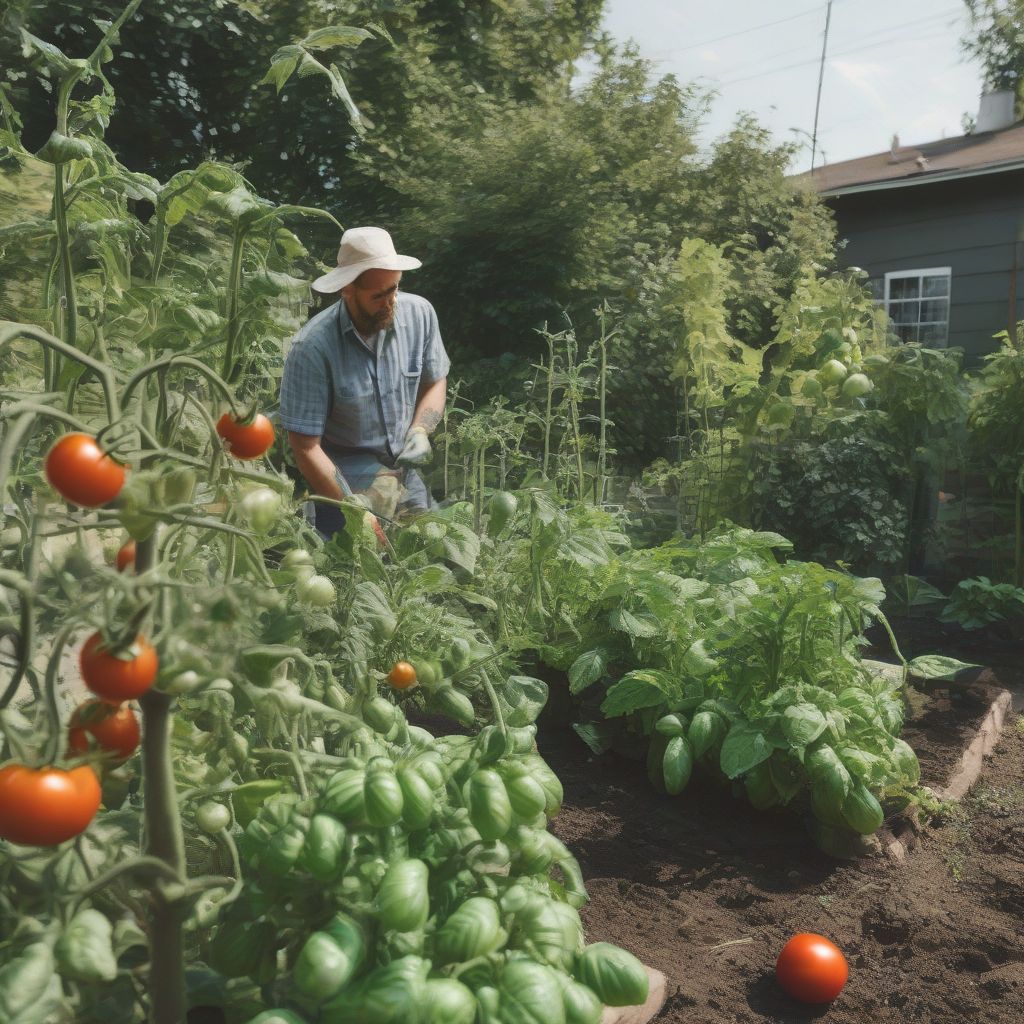Have you ever poured your heart and soul into nurturing your garden, only to watch in despair as blight creeps in, turning vibrant green leaves into brown, withered ghosts? It’s a heartbreaking experience for any gardener. But don’t lose hope! Managing garden blight organically is not only possible but can also lead to a healthier, more resilient garden in the long run. This guide will equip you with the knowledge and tools you need to combat blight naturally and effectively.
Understanding Garden Blight
Before we dive into the solutions, let’s first understand what we’re up against. “Blight” isn’t a single disease but rather a term used to describe a range of plant diseases caused by fungi, bacteria, or oomycetes (water molds). These diseases often manifest as dark spots, wilting, and ultimately, the death of plant tissues. Different plants are susceptible to different types of blight, so proper identification is crucial for effective treatment.
Common Types of Blight
- Early Blight (Alternaria solani): Often affects tomatoes and potatoes, characterized by dark, concentric rings on leaves and stems.
- Late Blight (Phytophthora infestans): A devastating disease that can quickly decimate tomato and potato crops. Look for water-soaked lesions on leaves and stems.
- Fire Blight (Erwinia amylovora): Primarily affects fruit trees, causing blossoms and branches to appear scorched.
- Downy Mildew (various species): Affects a wide range of plants, causing yellow or brown spots on leaves.
Factors Contributing to Blight
Several factors can contribute to the development of blight in your garden:
- High humidity and prolonged wet periods: These conditions create the perfect breeding ground for blight-causing pathogens.
- Poor air circulation: Dense foliage prevents leaves from drying quickly, increasing the risk of infection.
- Overcrowding: Planting too closely together can lead to poor air circulation and increased humidity.
- Lack of nutrients: Weak plants are more susceptible to disease.
Best Organic Practices for Managing Garden Blight
Now that we’ve laid the groundwork, let’s explore the best organic practices for managing blight in your garden:
Prevention is Key
- Choose resistant varieties: Selecting disease-resistant varieties is the first line of defense against blight. Look for labels indicating resistance to specific blights.
- Practice crop rotation: Rotating crops every year helps disrupt the life cycle of blight pathogens.
- Proper spacing: Ensure adequate spacing between plants to promote good air circulation and reduce humidity.
- Water at the base of plants: Avoid overhead watering, which can splash spores onto leaves.
- Mulch around plants: Mulch helps prevent soil-borne pathogens from splashing onto leaves.
- Improve soil drainage: Amend heavy clay soils with compost or other organic matter to improve drainage.
Cultural Controls
- Remove infected plant debris: Promptly remove and destroy infected leaves, stems, and fruit. Do not compost infected material.
- Prune affected branches: For trees and shrubs, prune infected branches well below the affected area.
- Sanitize tools: Disinfect gardening tools with a solution of bleach or rubbing alcohol between uses.
Organic Treatments
- Copper fungicides: Copper-based fungicides can be effective against certain blights. Follow label instructions carefully.
- Biological controls: Beneficial bacteria and fungi can help suppress blight pathogens. Look for products containing Bacillus subtilis or Trichoderma harzianum.
- Neem oil: Neem oil can be used as a preventative measure and to treat early stages of some blights.
- Homemade remedies: Some gardeners have success using baking soda solutions or milk sprays to control blight. While anecdotal evidence suggests their effectiveness, scientific research on these remedies is limited.
 Organic Garden Blight Management
Organic Garden Blight Management
Building a Resilient Garden
Managing blight organically goes beyond just treating the symptoms. It involves creating a healthy garden ecosystem that is naturally resistant to disease. This includes:
Soil Health
- Compost: Adding compost enriches the soil with beneficial microbes and nutrients, strengthening plant immunity.
- Cover crops: Cover crops improve soil structure and fertility, further enhancing plant health.
Beneficial Insects
- Attract beneficial insects: Ladybugs, lacewings, and other beneficial insects can help control pests that may weaken plants and make them more susceptible to blight.
Conclusion
Battling garden blight can feel like an uphill battle, but by implementing these organic practices, you can effectively manage this common garden problem and cultivate a thriving, disease-resistant garden. Remember, consistent prevention and early intervention are crucial for success. By focusing on building a healthy garden ecosystem and employing natural control methods, you can enjoy a bountiful harvest while minimizing the impact on the environment and your health. Now, it’s time to put this knowledge into action and reclaim your garden from the clutches of blight! Share your experiences and tips in the comments below – let’s learn and grow together. Don’t forget to explore other helpful gardening resources on our website!



